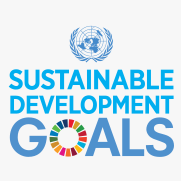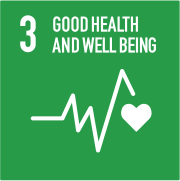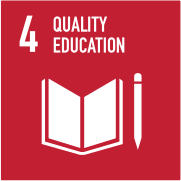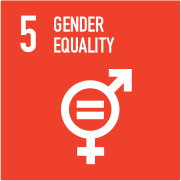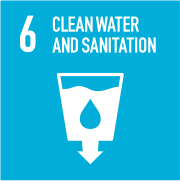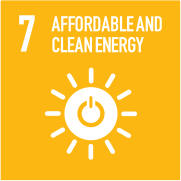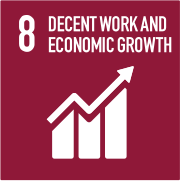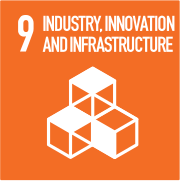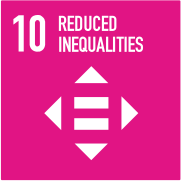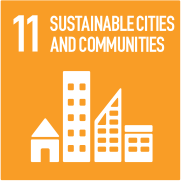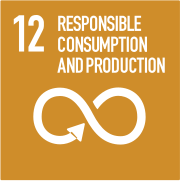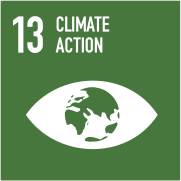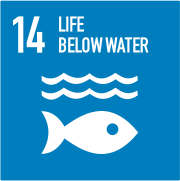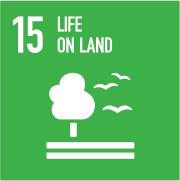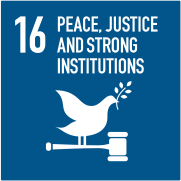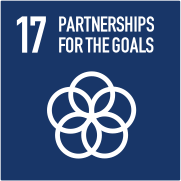SDG Compendium: SDG 15 - Life on Land
BeMED 20. Tourism and its impact on the Environment
Title Tourism and its impact on the Environment Author Audrey Gauci Age Guide Year 10-11 Subject Area European Studies Preparation Time Research on the impact of tourists on the environment – especially in relation to marine litter. Preparation of interview / questionnaires to conduct an investigation in a touristic village Estimated Duration 40 mins – reporting skills 40 mins – creation of investigation 40 mins – evaluation and reporting of investigation Site Any touristic locality Educational objectives Develop one of the European Studies projects by investigating and reporting on tourism and its impact on marine litter. Project Titles – The Impact of Tourism on the Environment Research, investigate and critically analyse themes: Protection of the Environment Candidates should be able to: – identify and understand the sources of air, land, water, noise and light pollution. – demonstrate some awareness of the possible environmental damage and solutions through the following case studies: the Mediterranean Sea and the Blue Plan. – identify and explain preventive measures to lessen their impact. – demonstrate an understanding of the extent to which modern farming practices, industry, tourism and transportation in Europe are responsible for environmental damage. Sustainable Development Candidates should be able to: – identify and understand the conflict of interest inherent between conservation and development in Europe, especially in the Mediterranean regions. Learning Outcomes Information management: – I can define the term sustainable development and its three pillars: economic, social, environmental. – I can analyse and explain the term biodiversity. I can discuss some of the threats it is experiencing, e.g. urbanisation, deforestation, over hunting/fishing. – Through examples I can identify and list conflicts of interest between economic development and environmental conservation. – I can discuss the concept of marine sustainability and pollution prevention giving examples drawn from the Mediterranean area, e.g. fisheries policy , Blue plan, Blue flags. – I can define and discuss the concept of Blue flag in terms of sustainable development of beaches and marinas. – I can analyse the benefits of having a sustainable fishing industry in the Mediterranean, drawing on examples of the bluefin tuna and swordfish. – I am aware of which sources I can consult to learn more about the EU’s environment and fisheries policies. – I can actively participate in processes and encourage negotiations for alternative sustainable futures. – I will challenge unsustainable practices across educational systems, including at the institutional level. Link to SDGs SDG 4: Quality education for all SDG 11: Sustainable Cities and Community SDG 13: Climate Change SDG 14: Life below water SDG 15: Life on land Educational resources required 1. Video tutorials on reporting: https://www.yre.global/video-tutorials 2. Interview guide: https://www.scholastic.com/teachers/articles/teaching-content/how-conduct-journalistic-interview/ 3. Case study on Sustainable tourism:- https://www.yre.global/international-collaboration-2/2020/9/23/sustainable-tourism-is-it-possible Remote preparation As part of their European Studies project work, student need to investigate and draw a report on one of 5 topics. One of the themes is Tourism and its impact on the Environment. Since both investigation and reporting are required, a session on appropriate reporting skills is carried out before the students actually go outside the school. Informative tutorials can be accessed online (Educational …
MoreBeMED 19. Gathering data to measure the extent of beach litter on a beach – Biology/Science Fieldwork
Title Gathering data to measure the extent of beach litter on a beach – Biology/Science Fieldwork Author Cynthia Caruana Age Guide Year 8–11 Subject Area Integrated Science, Biology, Education for Sustainable Development Preparation Time 30 minutes Estimated Duration 120 minutes on site 60 minutes follow-up for learners (in case of report or publication) Site Rocky/ Sandy beach of your own choice All learning resources are being provided for: Golden Bay Sandy Beach, Għajn Tuffieħa in Malta Resources can be adapted for other beaches. Educational objectives – Learners will investigate the litter that may be found at the beach, including its origin and possible method of dispersal as well as identify whether litter is biodegradable and non-biodegradable. – Learners will assist in a clean-up and learn to dispose of the litter found on the beach in their appropriate waste bag. – Learners will use simple calculations to find the area studied and the percentage frequency of the litter found as well as weighing mass of micro-plastics and waste found. – Learners will use observation skills, estimation, data collection and skills of analysis together with teamwork. Learning Outcomes – I can describe what is littering the beach and investigate the frequency of the most common litter items. – I understand the relationship between humans and marine organisms. – I can critically assess and give a rating to the quality of a beach in terms of its litter. – I recognize the importance of taking action to reduce the impact of the beach litter problem. Link to SDGs SDG 12: Responsible Production and Consumption SDG 14: Life below Water SDG 15: Life on Land Educational resources required Appendix 19.1 – Background information Appendix 19.2 – Consent form Appendix 19.3 – Map of area under study (Golden bay, Malta) Appendix 19.4 – Traced map Appendix 19.5 – Weather forecast Appendix 19.6 – Worksheet 1 Appendix 19.7 – Adapted worksheet Appendix 19.8 – Different origins of litter Learners will bring their own: · Tablet/writing materials · Photo camera/mobile · Gloves · Small jar for collecting micro-plastics · Spade and bucket Equipment needed for each working group: · Frame Quadrat · Sieve · Waste bags for collection: grey bag for plastics, black bag for general waste, white/organic waste bag and reusable container such as bucket for glass · Weighing scales (1 to share between groups) · Tape measure (1 to share between groups) Remote preparation (if applicable) · 1 week before activity day, learners’ parents/guardians need to sign consent form to allow them to participate in activity (Appendix 19.2) · 1 day before activity day, learners will need to download or print (depending if tablet will be used) a map of the area (Appendix 19.3), the area is to be traced on a sheet of tracing paper (Appendix 19.4) · Weather Forecast for activity day (Appendix 19.5) · Download or print-outs of worksheet for data collection (Appendix 19.6 or 19.7) · Proper attire for lesson including boots and waterproof jacket Planning Considerations Weather: if inclement weather …
MoreBeMED 18. Young journalists in action!
Title Young journalists in action! Author Audrey Gauci Age Guide Year 7-10 Subject Area English Language (but can be adapted to other languages) Preparation Time Preparation of interview / questionnaires to conduct an investigation in a coastal village/town. Estimated Duration 20 mins – reporting skills 20 mins – information session on marine litter 40 mins – discussion and creation of interview questions 40 mins – investigation outside school / online 40 mins – evaluation and reporting of investigation Site Any site related to the theme chosen – preferably a coastal area where marine litter is most prominent. Educational objectives – Adhere to the requirements of the English syllabus in relation to report writing – Learn how to investigate, be critical and assess comments and opinions expressed by others – Express themselves in journalistic-style writing – Work in teams Report Writing Report writing involves the production of a formal, informative and systematically presented text concerning a situation, person, place or plan. Report writing needs to evidence three clear characteristics: (a) adherence to the original request or brief; (b) a sustained perspective of who the report is supposedly being written by; and (c) an awareness of intended audience. Candidates should be able to: – Select which type of report to write in response to a question. – Employ a formal style of writing. – State the purpose of the report in the introductory paragraph. – Organise content by means of separate paragraphs clearly marked with subheadings. – Demonstrate an awareness of intended audience. Learning Outcomes Creative learning: – I can participate in writing for a wide range of purposes and genres. Expressive language: – I can report, both in speech and in writing, what others have said or written. Managing learning – I can edit and revise my own writing. – I can write appropriately for an audience and with a purpose. – I can vary what I write according to the intended reader Learning to know: – I can justify the importance of identifying problems, reflecting critically, thinking creatively and having a wider vision in order to plan for the future and become an effective agent of change. Learning to do: – I can use the natural, social and built environment that surrounds me, as a context and source of learning. Learning to be: – I am a critically reflective person and am able to evaluate decisions, choices and actions. Learning to live together: – I will challenge unsustainable practices across educational systems, including at the institutional level. Link to SDGs SDG 4: Quality education SDG 11: Sustainable Cities and Community* SDG 13: Climate Change SDG 14: Life below water* SDG 15: Life on land* *depends on the theme students select Educational resources required Video tutorials on reporting, in particular to report writing: https://www.yre.global/video-tutorials Interview guide: https://www.scholastic.com/teachers/articles/teaching-content/how-conduct-journalistic-interview/ Appendix 18.1 – Optional PowerPoint (Kindly send email on [email protected] if you wish to obtain this Powerpoint) Internet connection Remote preparation Since both investigation and reporting are required, a session on appropriate reporting skills is …
MoreBeMED 7. Accumulation
Title Accumulation Activity 3 of 3 about plastic pollution Author Saviour Bonnici Age Guide Year 4-8 Subject Area Physical Education Preparation Time 3 minutes Estimated Duration 30 to 45 minutes Site Gym/ Yard / Outdoor space No. of participants Whole class Educational objectives This is a fun physical education activity with the aim of teaching students about micro-plastics and our impact on the sea, fish life and our health. This activity provides a realistic and practical example of how micro-plastic accumulates in the food web. Learning Outcomes – Speed. Agility. Stamina. Quick reactions. – I understand that I am responsible for my actions and am capable of anticipating the problems of consuming plastic and adapt to reduce it. Link to SDGs SDG 12: Responsible consumption SDG 14: Life below water SDG 15: Life on Land Remote preparation Playing ‘Uncontrollable’ (Lesson plan 5) and ‘Plastic Breakdown’ (Lesson plan 6) before this activity will prepare students for this activity, however this is optional. Equipment needed Three types of coloured bibs · 6 green bibs · 4 yellow bibs · the rest (according to number of participants) red bibs Internet connection is needed to watch the video links provided in the background information. Method Objective: Catch your food Student Organization: Small Fish (S) – 6 students wearing green bib (or any other colour) Medium Fish (M) – 4 students wearing yellow bib Top Predator Fish (P) – 2 students Fish Food (F) / Plankton – The majority of the remaining students wearing a red bib (FR). It is VERY IMPORTANT to leave only a few without bibs (F). Playing the Game Part 1: Fish food is eaten by small fish · The playing area represents the Ocean · The fish food run in the Ocean · Instruct the small fish to go and eat (catch) all the fish food. · For now, the other fish are waiting. · Whenever a fish food is caught, he/she is transported to a designated captured area where they will remain. Everyone keeps a record of how many fish food they captured. Game is paused when all fish food is caught. Part 2: Small fish eaten by Medium fish Medium Fish introduced. Now the small fish will be eaten by the medium fish and transported to the captured area. Part 3: Medium fish eaten by the Top Predator fish Top Predator Fish introduced. Same as part 2 and the game ends here. Part 4: Explanation See Recap section below Recap The reason for the fish food with the red bib (FR) is now revealed. They are the micro-plastic. The others are the actual fish food (F). The small fish do not know the difference so when they eat, micro-plastics enter the food web. The higher the food web hierarchy, the more micro-plastic accumulation. Apart from killing marine life, when we humans eat fish especially the top fish, we inevitably also ingest the micro-plastics. Actions students can take: · When encountering plastic rubbish, try to …
MoreBeMED 6. Plastic Breakdown
Title Plastic Breakdown Activity 2 of 3 about plastic pollution Author Saviour Bonnici Age Guide Year 1-8 Subject Area Physical Education Preparation Time 3 minutes Estimated Duration 30 to 45 minutes Site Gym/ Yard / Outdoor space No. of participants Whole class Educational objectives Through this interactive activity students learn how plastic breaks into microplastic. It is important for students to conceptualize the process of plastic breakdown, for them to act against the effects of micro-plastics. Additionally, this is a great activity to work on teamwork and improve their physical abilities mostly by responding to quick stimulus, running and agility. Learning Outcomes – I am able to react to acoustic and visual stimuli through a change in speed while running, and at the same time changing direction quickly and effectively. – I am able to understand that I am responsible for my actions and capable of anticipating the problems of consuming plastic and adapt to reduce it. Link to SDGs SDG 12: Responsible consumption SDG 14: Life below water SDG 15: Life on Land Remote preparation Playing ‘Uncontrollable’ (lesson plan 5 in this resource pack) before this activity will help students to better conceptualize micro-plastics. But this is optional. Equipment needed 4 Bibs Internet connection is needed to watch the video links provided in the background information. Method Objective: Students must quickly react to form new groups otherwise they risk being left behind. Part 1: Familiarize With The Game 1) A class of say 25 students, hold hands – representing a plastic bag floating in the sea, the playing area (Diagram 1). 2) The teacher calls out a smaller number. Students must quickly form new groups consisting of the mentioned number. This represents the plastic bag disintegrating into smaller pieces. 3) Smaller numbers are called in sequence, each time forming new groups until eventually the number 1 is called out and students are now single individuals – this is the micro-plastic. The single plastic bag problem has now multiplied into unmanageable micro-plastics. 4) The teacher explains about the process of plastic breakdown. Check the Recap section below for information. Part 2: Introducing Marine Life 5) Restart the game. 6) Same as part 1 but this time 4 students wearing a bib represent marine life. These will be roaming around the playing area (diagram 2). All the other students representing the plastic bag try to catch the marine life. Rule: A catch is valid if the plastic group has the correct amount of members last called by the teacher. If for some reason the group splits while catching, this does not count. Being large the plastic will not be able to catch marine life at first. The situation turns when there are too many plastic pieces engulfing marine life. Recap When Part 1 is over the teacher explains about disintegration of plastic. Environmental factors such as the sun and salt, breakdown the plastic bag into very small pieces which are impossible to collect. The video …
MoreBeMED 5. Uncontrollable
Title Uncontrollable Activity 1 of 3 about plastic pollution Author Saviour Bonnici Age Guide Year 1-8 Subject Area Physical Education Preparation Time 3 minutes Estimated Duration 30 to 45 minutes Site Gym/ Yard / Outdoor space No. of participants Whole class Educational objectives Students will learn about the negative impacts of using a lot of plastic while engaging in physical activity. Learning while moving, and having fun, greatly improves the long-term memory of the learnt material. Students will understand that less plastic = healthier oceans = healthier fish, Earth and humans. Students will acknowledge that as long as humans continue to use huge amounts of plastic, the waste problem continues to be uncontrollable – it is up to us to reduce the consumption. Students will realise how wind and storms aggravate the plastic pollution in the sea. Learning Outcomes – I am able to throw an implement from a standing and moving position using the correct technique (alternate limbs) and correct grip. – I can identify the root causes of injustice (plastic rubbish) and can take actions that lead to a better quality of life and environmental sustainability. – I understand that I am responsible for my actions and capable of anticipating the problems of consuming plastic and adapt to reduce it. – I can involve myself and others (family and friends) in real-world issues (plastic rubbish) to bring about a positive difference (reduce single-use plastic consumption). – I am now equipped with a future-oriented perspective for how I live my life as a citizen in my country and in the world. Link to SDGs SDG 12: Responsible consumption SDG 14: Life below water SDG 15: Life on Land Equipment needed The teacher will need to mark the areas (diagram below) by either: 1) Mark the midline and rubbish bin area with markers or cones. OR 2) If equipment isn’t available improvise by using either 2 chairs or 2 bottles to mark the midline peripheries. Same goes for the rubbish bin area. The teacher will also need safe throwable material by either using: 1) Bibs, markers and/or soft balls (at least 10 pieces but the more the better) OR 2) If this is not available any other plastic material such as plastic bottles, caps & wrapping. Internet connection is needed to watch the video links provided in the background information. Safety Precautions Use soft objects to throw that do not have a sharp edge – markers and softballs are great. Method Objective: The team with least amount of plastic before time expires wins the game. Part 1: Introducing Plastic in the Sea The game 1. Playing area is divided in 2 sections (diagram above) – Beach and Sea. 2. The Beach is occupied by the Teacher and 2 other students. These are the bad guys. The rest of the students are on the ‘Sea’ area – the good guys. 3. The bad guys have a few markers/bibs/ or any other type of safe throwable equipment – representing …
More